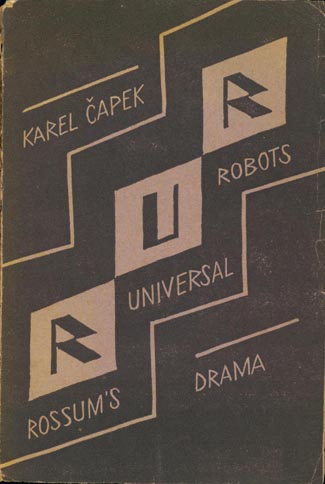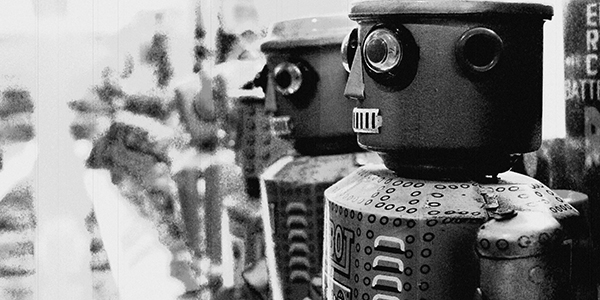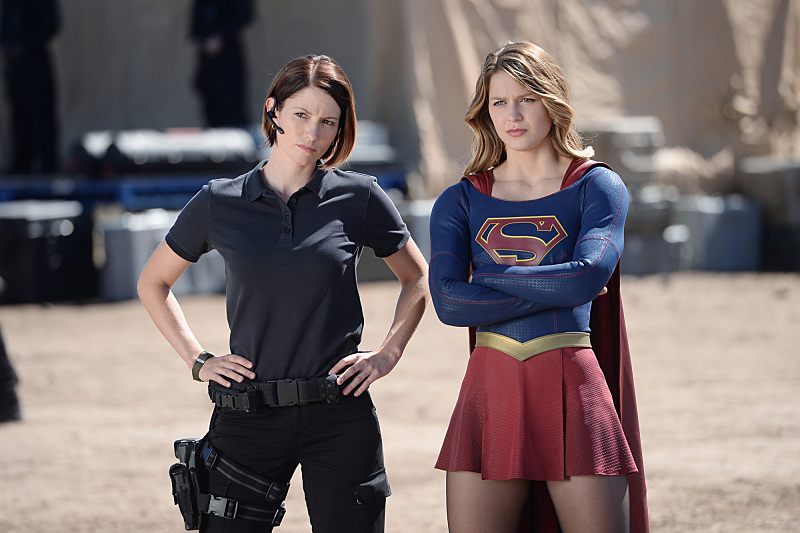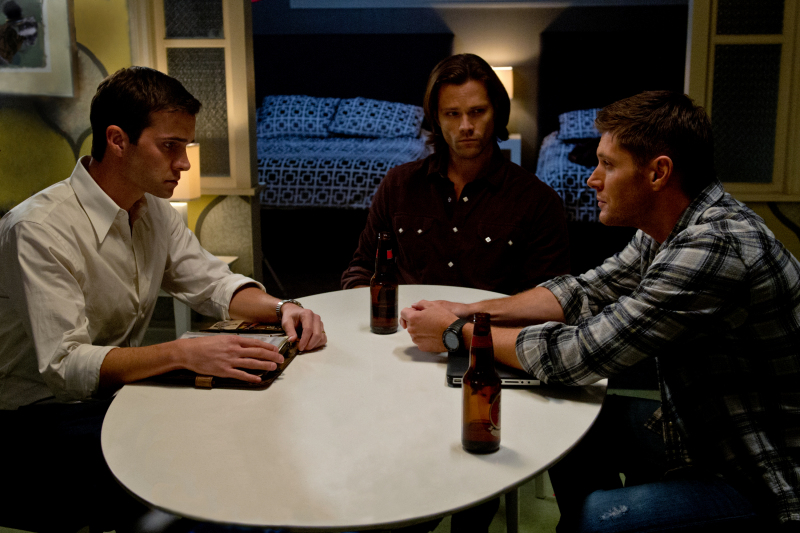Retro Review: R.U.R.: How A Play Gave Birth To A Whole Genre
[Feature image by yeowatzup)]

R.U.R.
play
by Karel Čapek
Let’s think about robot movies, shall we? You’ve got your Blade Runner, your Short Circuit, your Heartbeeps, I Robot, Terminator, Robocop, A. I., Wall-e … and those are just off the top of my head. And then there’s movies that aren’t about robots but feature them prominently: where would Star Wars be without R2-D2 & C-3PO? Let’s face it: we love movie robots. So it’s just that much more astonishing to realize that the granddaddy of them all, the story that literally gave us the word “robot”, has never–never–been made into a feature-length English film.
R.U.R. (It stands for “Rossum’s Universal Robots”) was written in 1920 by Czech playwright Karel Capek. It not only created the robot genre, but also defined most of its most popular tropes. And yet, a browse through the movie database shows very little: a few TV adaptations here, a radio play or two, one rather odd chixploitation version from 2013 that doesn’t seem to have made it past the teaser stage. The story that launched a thousand robot movies somehow does not have a movie of its own.
The play is set on an island where the titular company is busy churning out thousands of robots and shipping them all over the world. The General Manager, Harry Domin, is busy dictating business letters and taking phone calls when he receives a surprise visit from Helena Glory, daughter of the President and representative of the Humanity League, which wishes to liberate the robots. Domin and his department heads explain to her that there is nothing really to liberate, as the robots are machines, without even the ability to feel desires. They also note that she is far from the first to want to “liberate” the robots. They offer to let her go preach to them in the warehouse if she feels like it, but candidly note that it won’t do any good.
There follows a discussion on automation and the replacement of labor with machines. The men of R.U.R. (and they are all men) envision a very near future in which all work is done by robots, and mankind only need work at self-improvement with no worry for adequate food or shelter. A utopian dream, and one which rings an unfortunately familiar bell for those of us here almost a century later, watching the automation of everything from fast food to driving, and the moneyless economy no closer than before. Alquist, the building and facilities manager, is openly skeptical of the glorious new world, though, and says so. While the rest of the staff are making lunch, Domin (rather aggressively to modern tastes) gets Helena to agree to marry him. End of Act I.
Act II picks up ten years later: things have been busy. Working men have revolted against the robots, robots have been armed and turned into soldiers, and it’s been nonstop war ever since. Also, the birth rate has plummeted. There have even been stories of a robot rebellion being organized. Unfortunately, news and supply ships haven’t come for weeks, so no one on the island knows quite what is going on. Domin has done his best to shelter Helena from the impending doom, but she keeps piecing things together. When the robot librarian Radius begins to rebel, he tells her he does not want to take orders from humans any more. He begins to show signs of emotion: accelerated heartbeat, dilated pupils, signs of fear. And anger.
Helena burns the plans for the manufacture of robots just before Domin and his colleagues enter in high spirits. It appears that the long-overdue mail boat is coming into port, right on schedule. This they take to mean that the rebellion and chaos are over, and things are back to normal. They gleefully discuss their plans to make robots of different races and program them to hate each other so there will never be another worldwide rebellion.
The mail boat arrives, carrying nothing but leaflets urging robots to rise up and kill all humans. By the time the humans realize this, they are already surrounded, and the signal sounds for attack.
Act III begins with the robots surrounding the factory in silence, and the humans, still trapped, waiting for the inevitable. They lament the use of their robots as soldiers, but defend their creation to the very end. Alquist turns on the others, declaring that the robots never should have been created and everything that happened was their fault. Dr. Gall, the head of the Physiological Department, confesses he has been transforming the robots in secret, giving them emotions and awareness. Helena confesses that the experiment was her own idea, in hopes of giving the robots soul. Busman, the Managing Director, dies while trying to negotiate with the robots. The attack commences, and everyone is wiped out except Alquist, who is kept to work for them.
Years later, Alquist is trapped in the factory, laboring in vain to try and reverse-engineer the Rossum formula. The Central Committee of robots tries threatening him to reveal the secret of life, then resort to begging him, revealing their own efforts have met with failure. They also reveal that they have not been able to find a single other living person, despite searching the world. They order him to dissect as many of their own as he needs to figure out how to make them. Meanwhile, the robots Primus and Helena (modeled after the late Helena) discover they have evolved feelings for each other. When Alquist discovers this, he gets the idea to order one of them to the dissecting table. Each insists he take them instead of the other, demonstrating the robots have discovered love. Alquist declares them the new Adam and Eve, and sends them out into the world.
Karel Capek wrote about a half-dozen each of plays and novels, mostly to do with science fiction and/or satire. R.U.R. was his first, and to date his best-remembered. He tended to write about human nature, and the way it would affect the future. He also, interestingly, wrote a series of travel books. One of his novels, War with the Newts, covers very similar territory to R.U.R., but with intelligent amphibians instead.
It is often said that he invented the word “robot” to refer to mechanical men, but in fact neither point is strictly true. First, it was his brother Josef who came up with the word (basing it on the Czech word robota, which referred to hard work or drudge labor). Secondly, Capek’s “robots” are not mechanical at all, but biological constructs, as Domin explains in Act I. Rossum, determined to prove that man does not need gods to create life, built the original proto-animals as a sort of proof-of-concept. His nephew, who had a more mercantile eye toward things, perfected the biological machines, giving them only what they needed to be functional. Think of Blade Runner’s synths but without the emotional response (at first), and you’re on the right track. It wasn’t until later that people began to associate robots with mechanical clanking automatons that moved in mechanical staccato.
Capek touches on several interesting themes: the perils of automation, the decline of humanity in an automated world, what it really means to be human: all themes that have been revisited again and again in robot-based fiction ever since. He spends a particular amount of time on the consequences of turning too much power to the robots. He speaks of robot soldiers and servants. Our world has autonomous drones: how long until they are weaponized and auto-selecting targets? Self-driving cars are slowly becoming a reality: likely everyone reading this will live to see them. Suddenly Capek’s ideas are coming true, in ways he himself could not have imagined, and we are long overdue in working out the consequences.
It is a shame that the play has not ever made it to Hollywood intact. The story is a little dated now–certainly its attitudes to women could use a bit of an upgrade–but the themes are popular and well-travelled. Most of the “action” takes place offstage, while the protagonists spend most of their time in Domin and Helena’s private rooms. No doubt efforts would be made to make it more commercial for any film release: action sequences of the robot rebellion, punching-up the love story, that sort of thing. Probably wind up with Will Smith in a starring role, again, giving him (along with I, Robot and I Am Legend) a perfect hat-trick of science fiction stories munged up by the Hollywood treatment. In fact, perhaps it is for the best after all that it never made it to the silver screen.
Still, one can’t help but feel that in the right directorial hands, it could work very well. Vincenzo Natali (Cube, Hannibal) has experience working with strong character-driven works and limited sets, as does James Wan (Saw). It would be interesting to see what more outre, creative directors could do with it: I’m blue-skying here, but Guillermo del Toro or Terry Gilliam would be very interesting choices indeed, and definitely put their mark on the story.
R.U.R. is the granddaddy of robot fiction, and deserves its place as one of its author’s best-remembered works. It’s a bit dated in places, a little corny, and a lot preachy. But it asks questions we’re still working on the answers for, and presents them in a way that is–no other word for it–human.
The script is available in the public domain in most countries. A copy of the English translation by David Wyllie may be downloaded here.
See all our retro reviews here.
(Kelly Luck thinks Andy Kaufman is highly underrated as a robot. Her other SciFi4Me work can be read here.)





